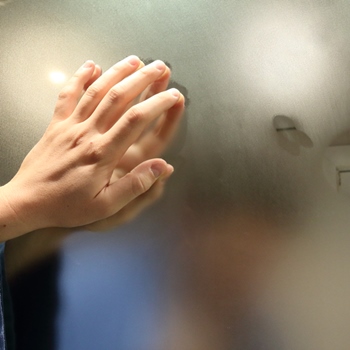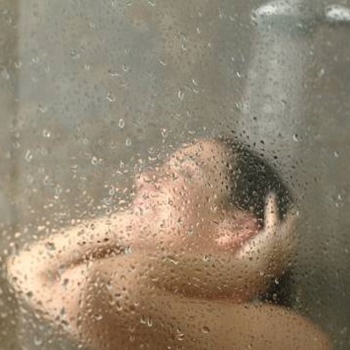No matter where you live and how big your house is, condensation can be an annoying, and sometimes an outright dangerous issue. Often time, people spend large amounts of money to get rid of condensation. This nuisance is not only aesthetically unpleasing – it also leads to mold and we all know that mold can be hazardous to our health.
Being that no one wants fungi living rent-free in their bathrooms, it is finally time to do something about it. The next couple of sections will do just that – give you practical advice on how to get rid of condensation in your bathroom. The thing is, this process is not hard on its own, but it needs to be dealt with immediately. A lot of smaller changes you are about to make will add up to a humidity-free bathroom. Let’s dive right into it!
Why is Bathroom Condensation Such a Big Deal?
 Ok, let’s get one thing straight – condensation in the bathroom is not so bad if you deal with it right after it appears. Essentially, condensation is just water from vapors that got stuck on the walls due to temperature differences. But, if not dealt with accordingly, condensation will start causing damage.
Ok, let’s get one thing straight – condensation in the bathroom is not so bad if you deal with it right after it appears. Essentially, condensation is just water from vapors that got stuck on the walls due to temperature differences. But, if not dealt with accordingly, condensation will start causing damage.
People often underestimate the power of water. Inside a bathroom, water will find ways to penetrate all the cracks and imperfections, ultimately leading to damage through mold and other issues caused by high humidity.
That is the reason I always insist on being proactive. Once molding settles in, you will have a hard time getting rid of it, especially during humid seasons. An ounce of prevention is worth a pound of cure has never been more appropriate when it comes to water damage in the bathroom. So, what is the big deal with issues caused by condensation?
Problems Caused by Condensation in the Bathroom
Humidity is the arch-enemy to everything that has to do with construction and building materials. Over longer periods of time, humidity can take down stable walls, and it can cause all sorts of materials to deteriorate and break.
The bathroom is an ideal environment for humid air to turn into water, aka the process of condensation. This water gets under the tiles and under the surface layer of bathroom walls, slowly creating molding. After enough mold aggregates, the walls start chipping away, and the tiles get even more damaged.
Now, the sole destructive nature of unchecked condensation is not the only hazard here. The mold that forms thanks to the humid air is dangerous to human health. And, in the case the humidity escapes into the house, molding can take place elsewhere, e.g. in your hallway or your bedroom.
How to Stop Condensation in Bathrooms?
Some homes are built in such a way that completely stopping condensation is virtually impossible. Old houses with weak inner insulation have these issues, and there is not much you can do besides tearing down the old walls and build new ones.
But, fear not, because with a few simple solutions you can alleviate the issue of condensation. There is also the route of habit changing, but we will get to that in a bit.
1. Dehumidifiers
One of the simplest and most expensive solutions is to get a dehumidifier. These devices are designed to suck the humidity out of the bathroom air and pump the dry air back into the room. However, besides the price of a dehumidifier, there is also a matter of logistics. Smaller bathrooms often can’t afford the space for such a device, so people resort to other methods.
If you can afford the price and the extra space for a dehumidifier, I say go for it! Just remember to clean it regularly because it will have to process a lot of humid air.
2. Mop Often
This method may be the cheapest out there, but it is a method that delivers. As soon as you notice that the thick air is condensing on the walls and other surfaces, start wiping and moping the newly-formed water deposits.
Also, if you happen to spill some water after you shower (or leave wet footprints) it would be great to develop a habit of moping the extra water right away.
3. Bring the Heat Up
Because humid air needs to reach the critical temperature to start condensing, you can consider another approach – the thermodynamic one. A strategically placed bathroom heater can make a huge difference if you don’t let the bathroom go cold suddenly after you take a shower.
A towel heating rail will also do the job, especially if it’s a model that works constantly, like the plumbed rail type. All in all, by bringing the heat up, you prevent the water vapor from ever transforming into condensate.
4. Install Extractor Fans
 As far as ventilation goes, I always recommend opening a bathroom window whenever you get the chance. But, once the freezing temperatures hit, this method may prove counter-productive. Cold temperatures help the water condense, remember? And, if you suddenly lower the bathroom temperature, you risk trapping some condensed water in those secluded corners.
As far as ventilation goes, I always recommend opening a bathroom window whenever you get the chance. But, once the freezing temperatures hit, this method may prove counter-productive. Cold temperatures help the water condense, remember? And, if you suddenly lower the bathroom temperature, you risk trapping some condensed water in those secluded corners.
That is why extractor fans win over opened windows when it comes to bathroom condensation. They do not bring the heat down, but they do get rid of extra air humidity, especially after you take a shower. Speaking of…
5. Reconsider Your Showering Habits
You might find this too radical, but lowering the overall heat of the showers you take every day may fix the condensation issue. People all around the world use unnecessarily-hot water to take showers, thus building up the humid air that will eventually turn into condensate.
So, try using a bit less hot water next time, and see whether the situation got better. Not only is it better for your bathroom, but it is proven that colder showers help us relax and build up our immune systems to a degree.
Wrap Up
And there we go – the practical advice everyone needs. As you could see above, fighting condensation sometimes requires structural, or in some cases habitual, changes. Nevertheless, taking some time to commit to these tasks will pay off big time in the future, not only in a practical but in an aesthetical way as well. The bathroom is a room we go in at least a couple of times a day, so why not have a pleasant experience while at it?
Believe me, a bathroom with a condensation problem can turn into expensive construction work in no time if you don’t act as soon as possible. Do not trap your bathroom into the infamous “it’s just some water on the wall” trap. Now go and apply this newly-acquired knowledge and rid your bathroom of condensation and potential damages, everyone in the household will thank you. Good luck!